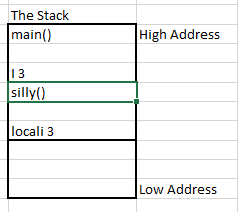Methods & Frames
The Stack Grows Downwards In Memory
public static void main(String[] args)
{
int i=1;
int a=4;
}
- Frames are added to the stack at the highest available address (on the stack)
- Here we illustrate this by showing the stack with the highest address at the top
- The stack fills "downwards"
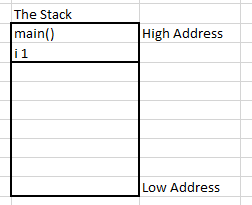
Each method call adds a new frame to the stack
public static void main(String[] args)
{
int i=1;
int a=4;
silly();
}
void silly()
{
float p=5.6f;
}
- When a method is called a new frame is added to the stack
- A method can only access its own frame
- Code in silly() cannot use the variables created in main()
- A frame limits the scope of a variable
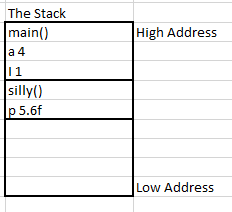
Frames & Variables
public static void main(String[] args)
{
int i=1;
int a=4;
silly();
}
void silly()
{
float p=5.6f;
int i=3;
}
- This is why we can use the same variable name in different methods without changing the value everywhere
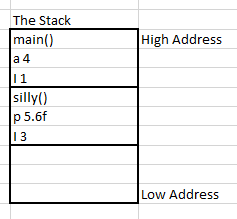
Frames & Scope
public static void main(String[] args)
{
int i=1;
int a=4;
silly();
}
void silly()
{
float p=5.6f;
int i=3;
i--;
}
- This is why we can use the same variable name in different methods without changing the value everywhere
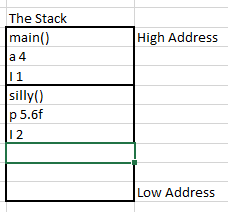
public static void main(String[] args)
{
int i=1;
i = silly(i);
}
void silly(int locali)
{
}
- This is why we need to pass values as parameters if we want to use them in the method
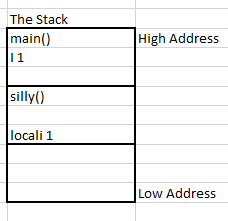
public static void main(String[] args)
{
int i=1;
i = silly(i);
}
void silly(int locali)
{
locali = 3;
return locali;
}
- Similarly if we want to pass back a value to the calling method we have to use a return
